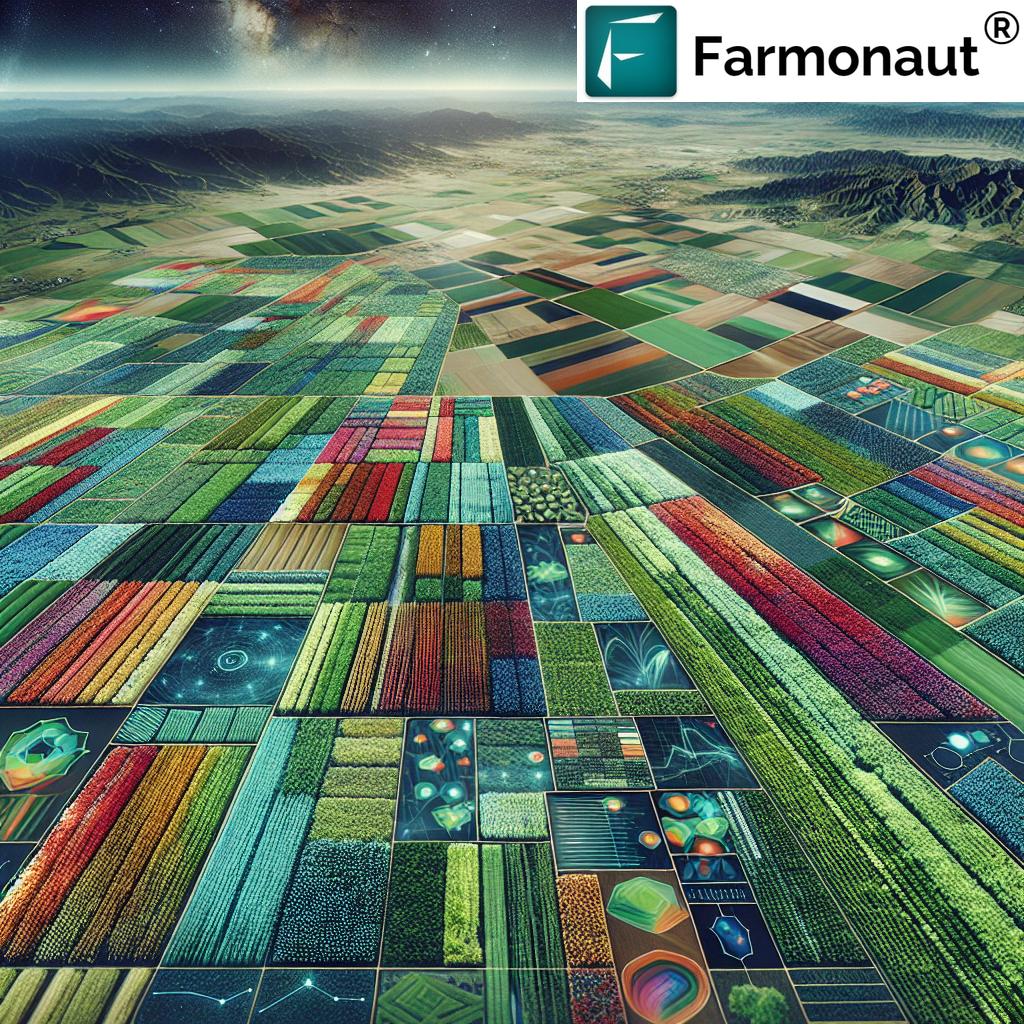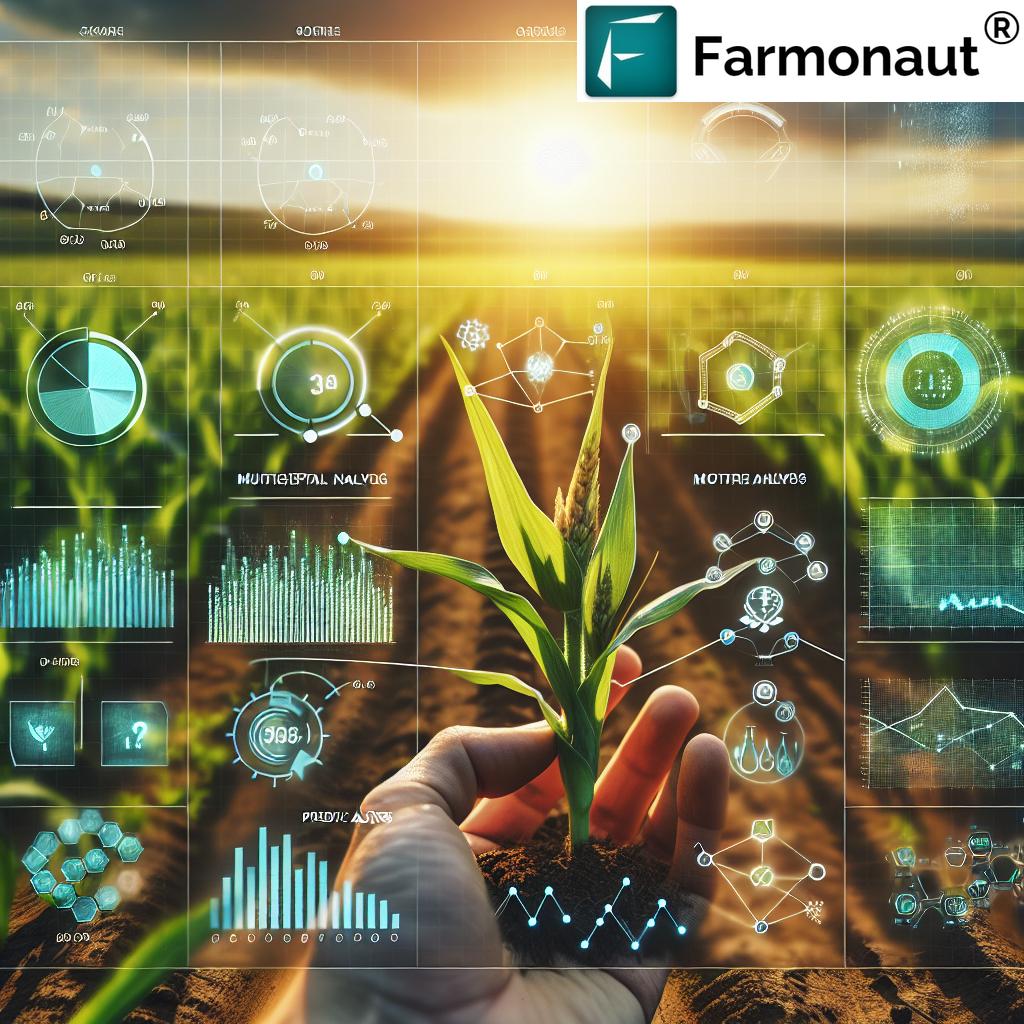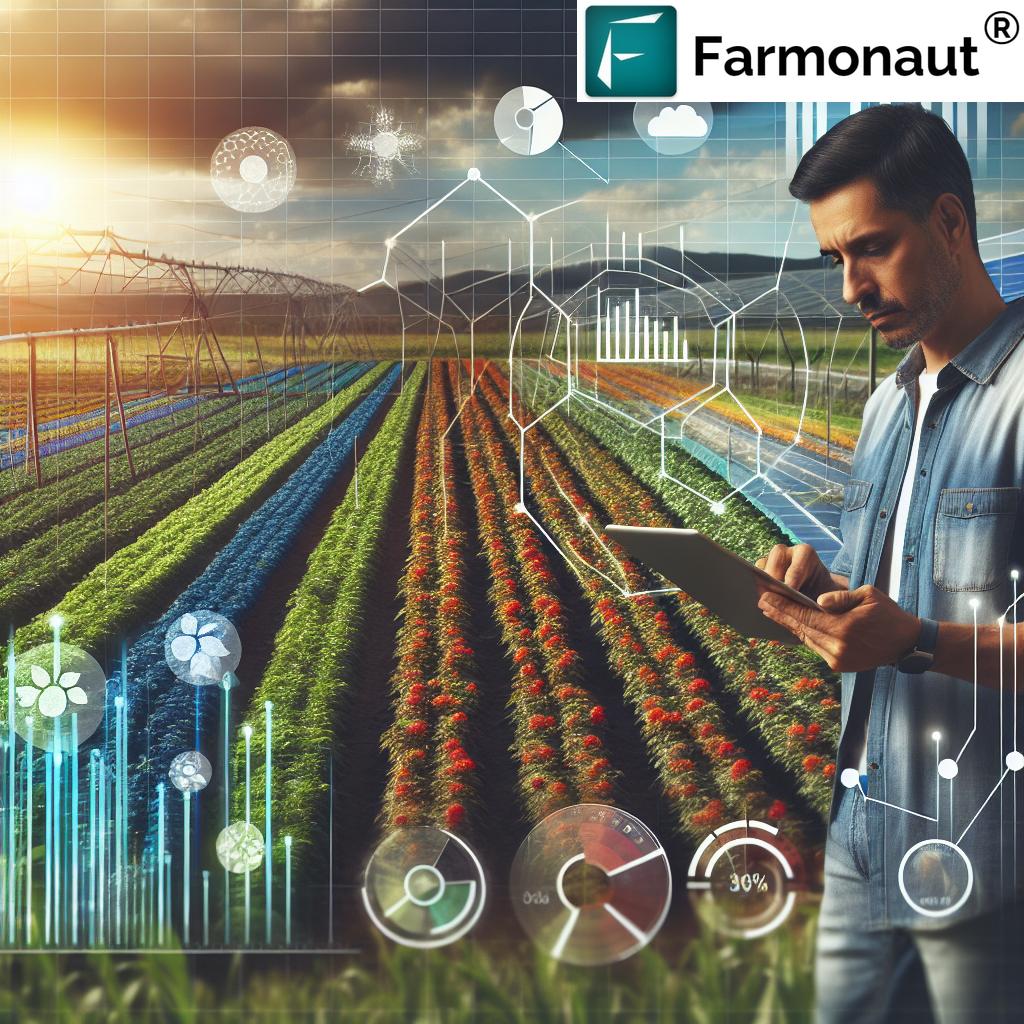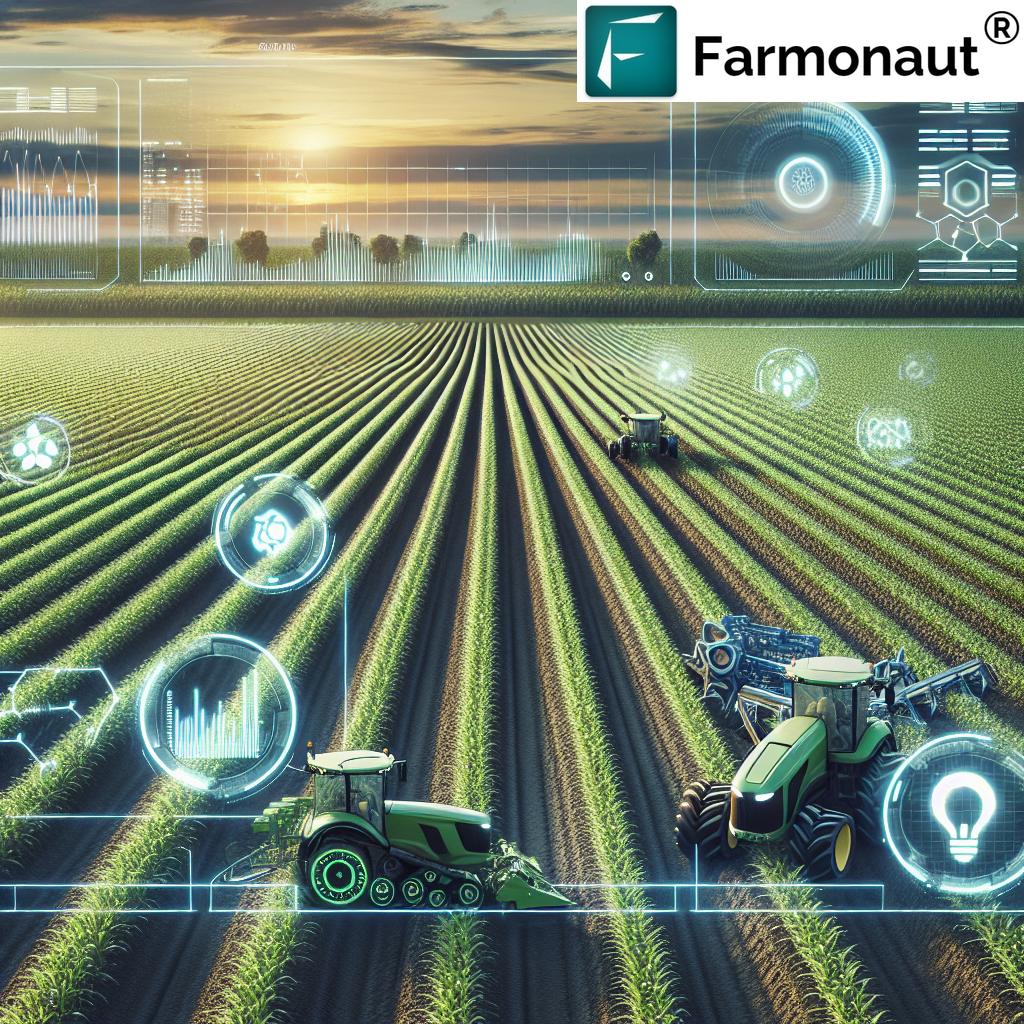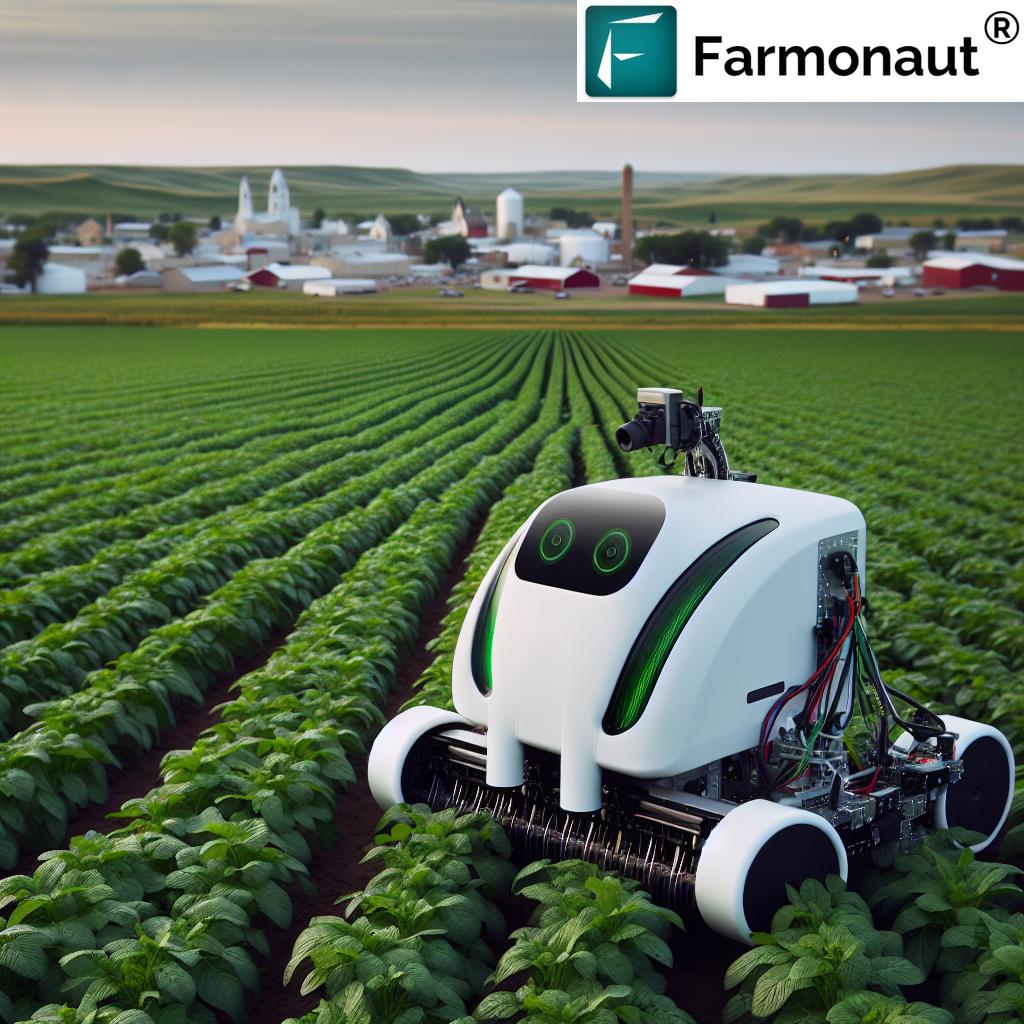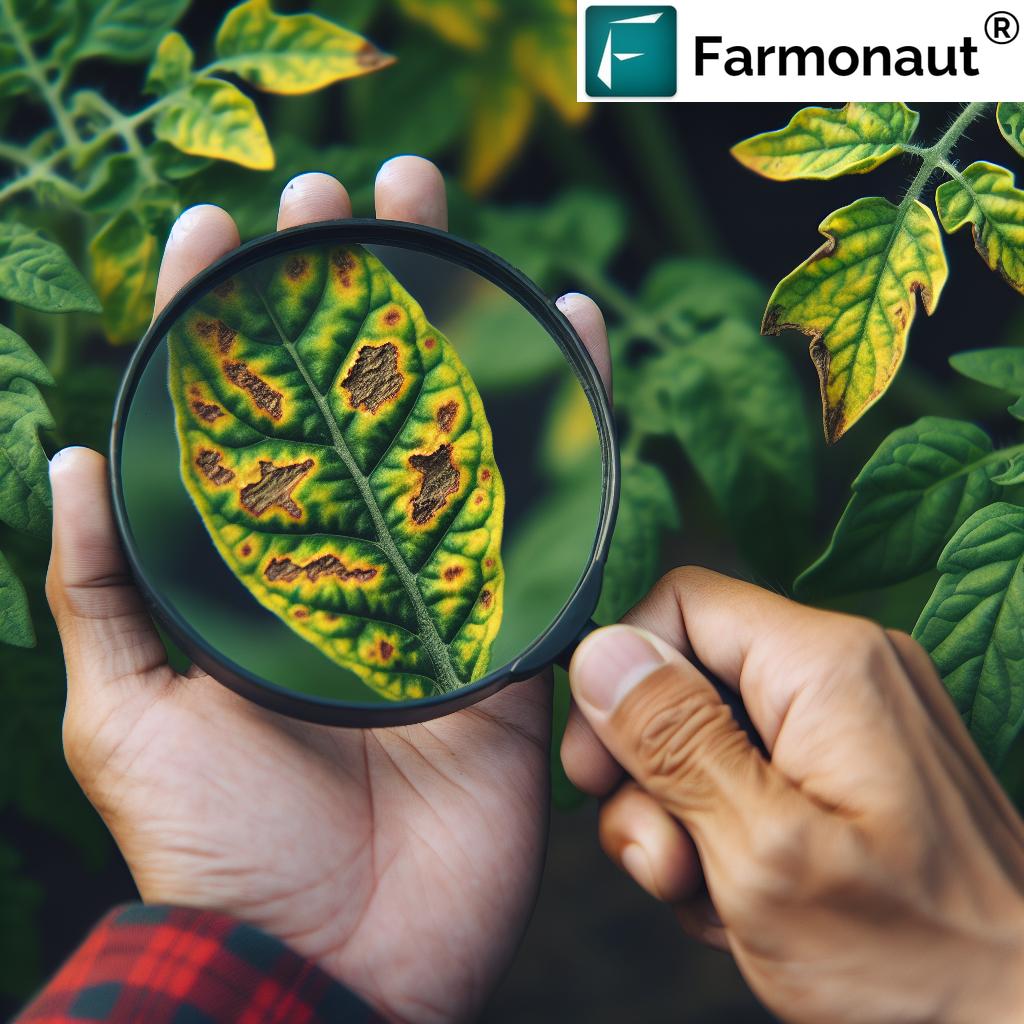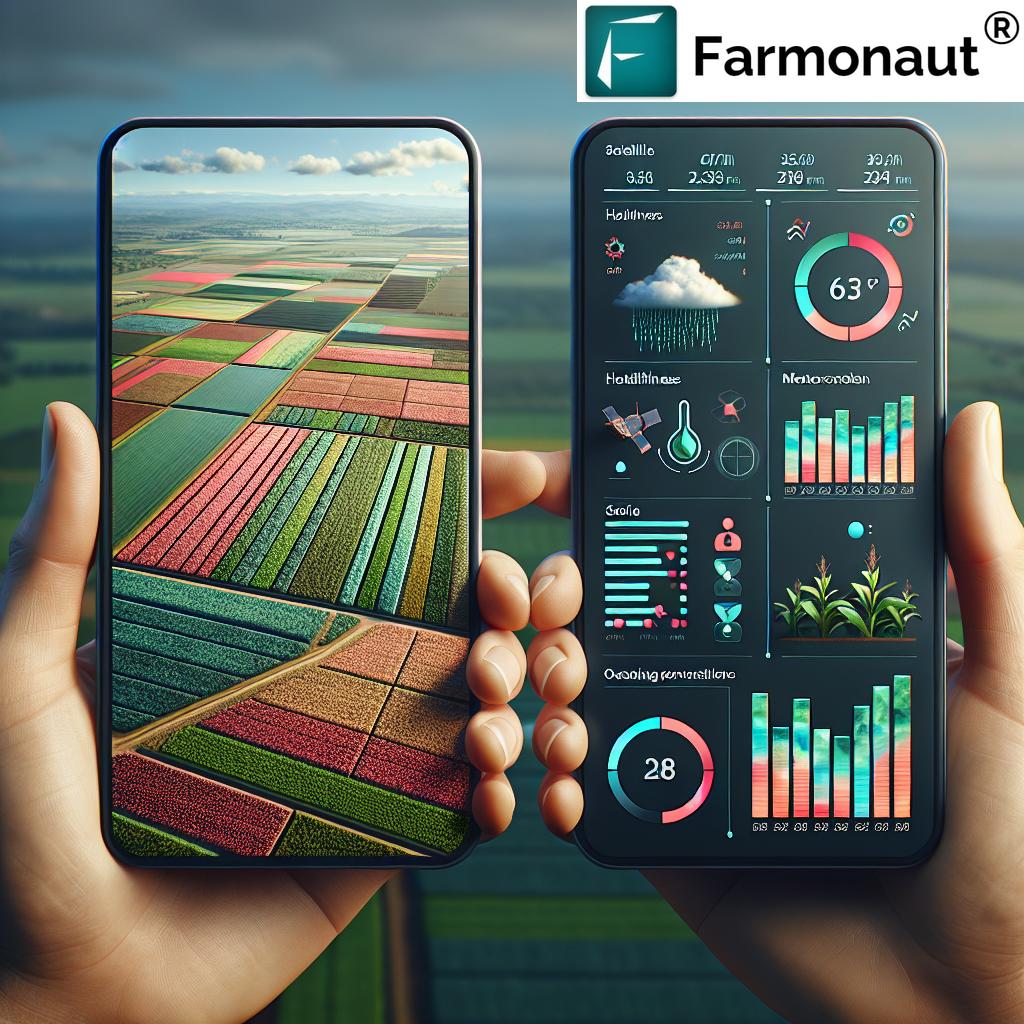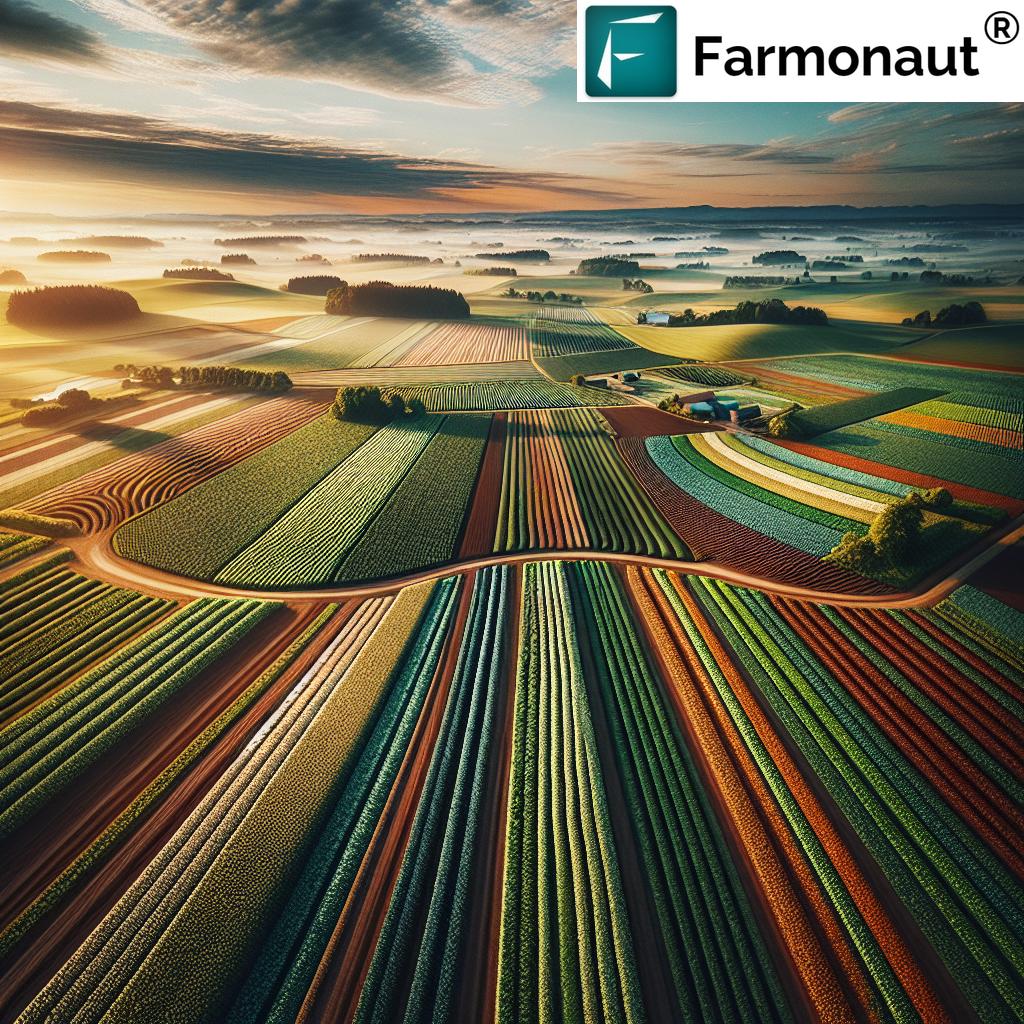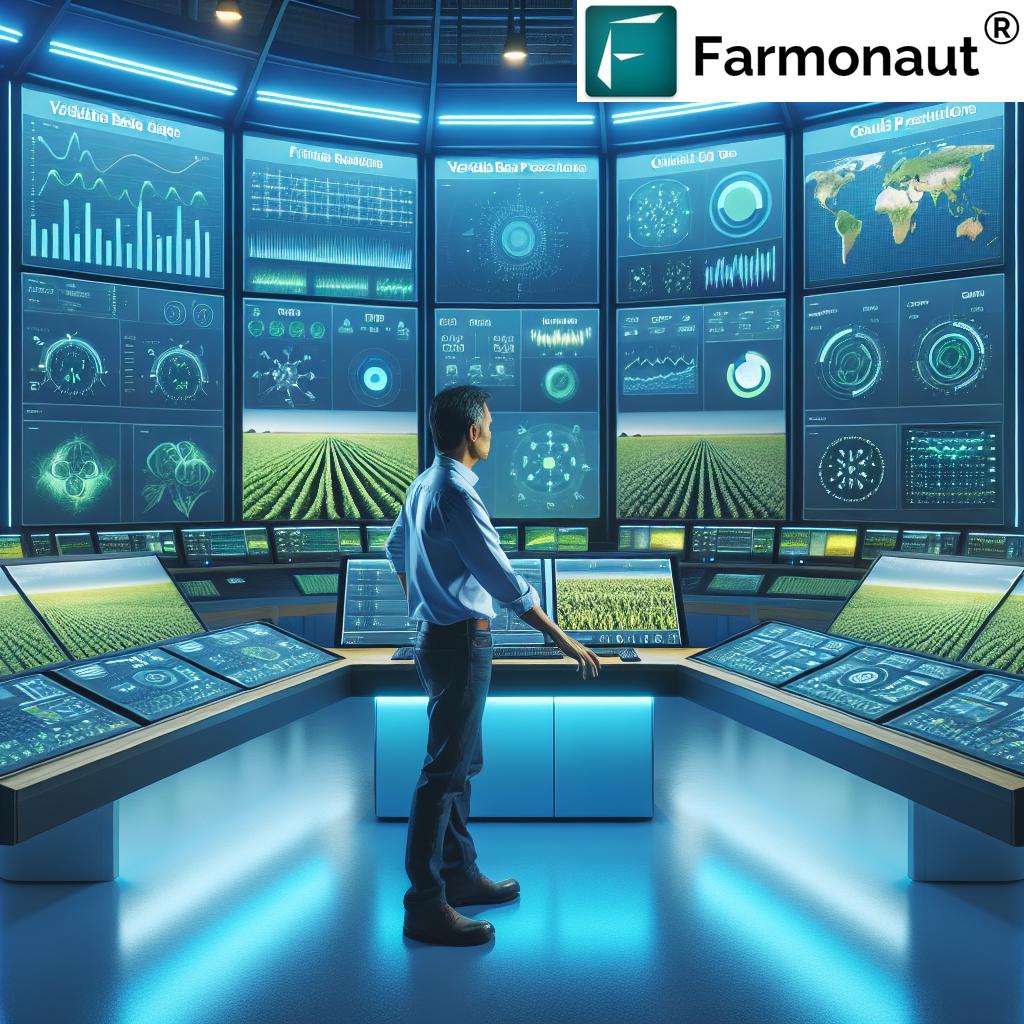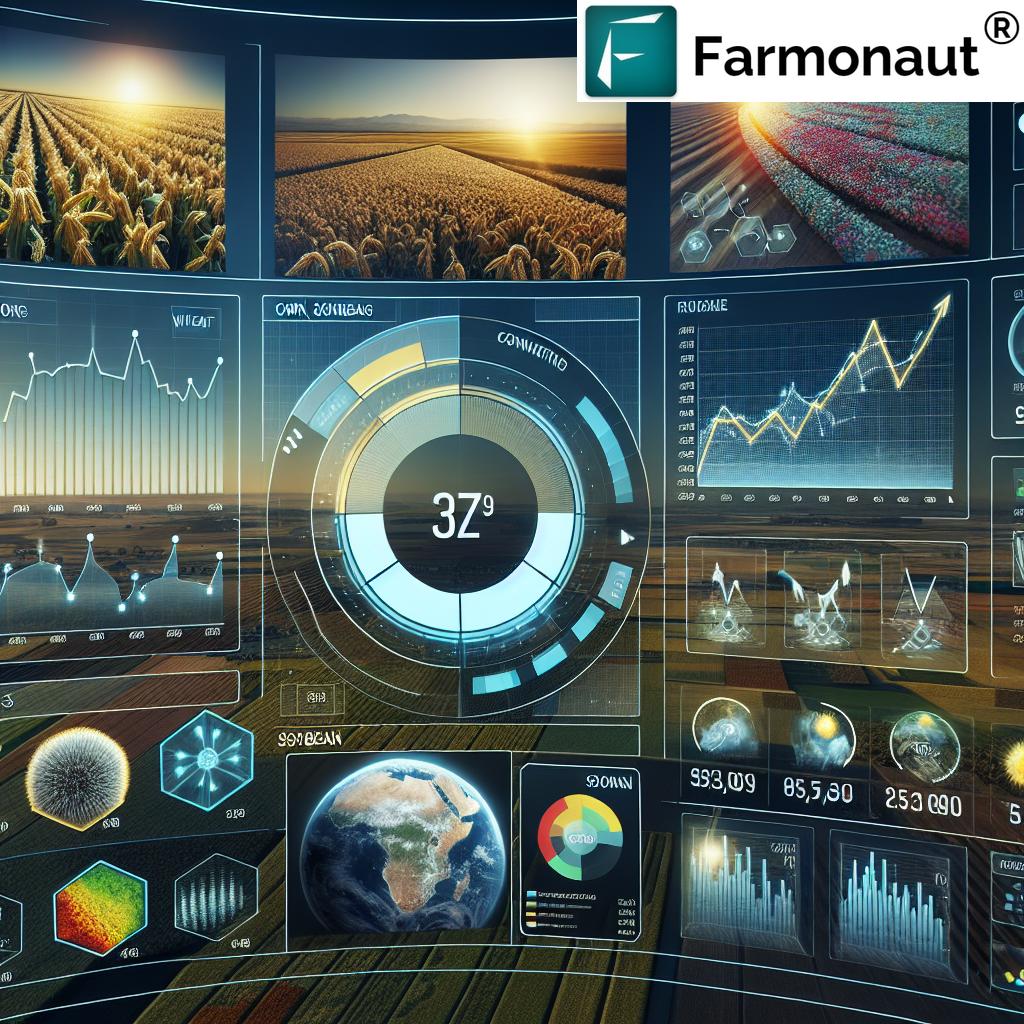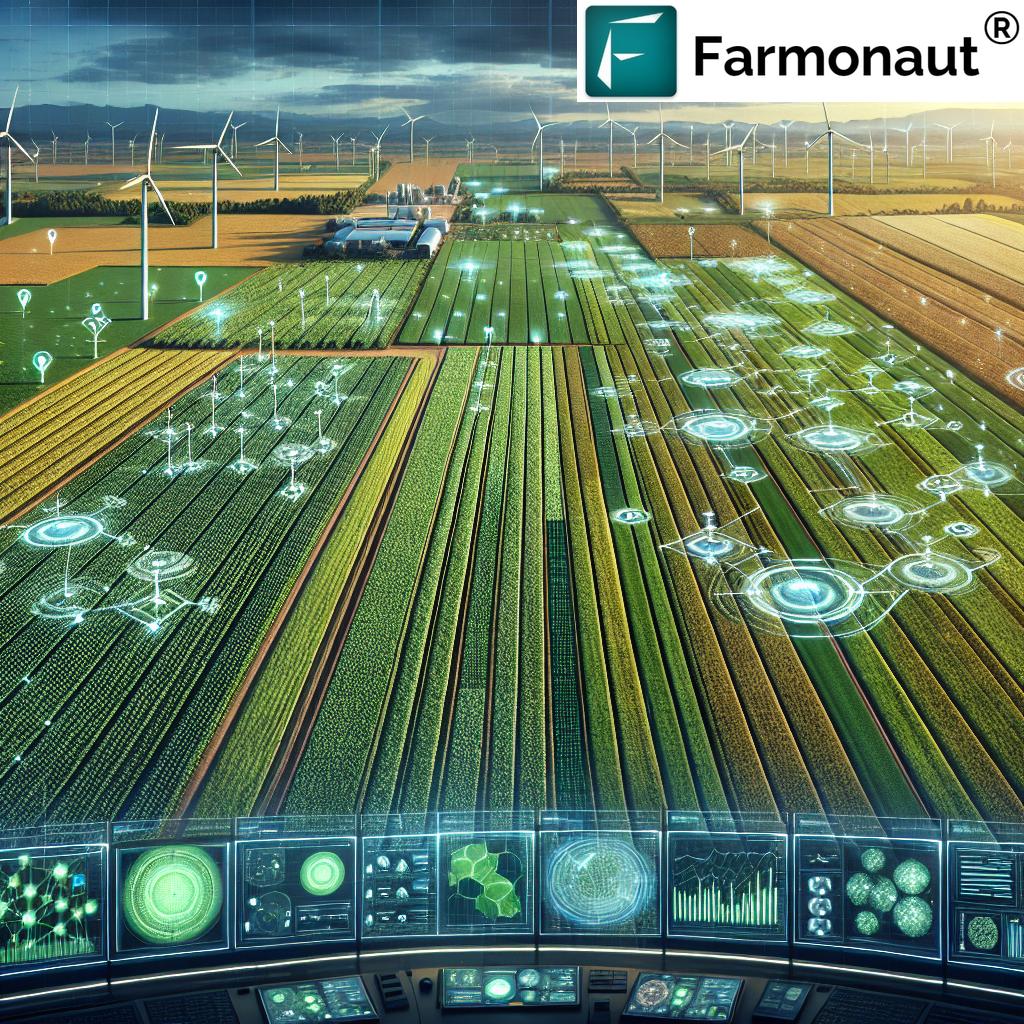Crop Monitoring Software: 7 Shocking Farming Innovations
“Over 70% of modern farms now use satellite-based crop monitoring software for real-time field analysis and yield prediction.”
Introduction: The Digital Revolution in Crop Monitoring Software
The world of agriculture is undergoing a seismic transformation. At the heart of this change lies crop monitoring software, a suite of digital agriculture solutions that are reshaping how we manage, monitor, and optimize farm operations. As we integrate synergistic technologies—from satellite imagery and drones to IoT sensors and artificial intelligence (AI)—it becomes clear that the future of farming is data-driven, intelligent, and interconnected.
Our goal with this comprehensive guide is to unveil the seven most shocking innovations in crop monitoring software that are revolutionizing yield optimization, resource efficiency, and sustainable agriculture. We’ll explore the crucial roles these tools play, drawing on key focus areas such as soil analysis software, real-time crop health monitoring, predictive analytics in agriculture, and more.
With the adoption of smart farm management tools, farmers worldwide can now access powerful insights—empowering informed decisions that boost yields, reduce costs, and enhance sustainability. As we move forward, these advanced platforms are also lowering the barrier of entry, making technology accessible to even smallholder farmers.
Let’s dive into the remarkable advancements and key features of modern crop monitoring software, and understand how platforms like Farmonaut are making the digital agriculture revolution a reality—one field at a time.
Advancements in Crop Monitoring Software & Digital Agriculture
We are at the forefront of an agricultural technology evolution. Modern-day crop monitoring software is shaped by a confluence of robust innovations, leveraging vast datasets from various sources including satellites, drones, field sensors, and artificial intelligence. These technological breakthroughs are not only transforming data collection, but also intelligence extraction, visualization, and real-world field action.
- Satellite and Drone Imagery: High-resolution aerial imagery, whether from satellites or drones, now provides an unmatched view of fields, delivering crucial data to spot pests, aiding detection of irrigation needs, and visualizing crop vigor at scale.
- Remote Sensing and Multispectral Analysis: By harnessing multispectral sensors, we analyze wavelength-specific absorption and reflection from crops, identifying which plants are flourishing and which are struggling—driving targeted field interventions.
- Internet of Things (IoT) Sensors in Farming: With networks of IoT devices, precise field data (e.g., soil moisture, nutrient levels, temperature) is collected in real time, enabling automated and optimal resource utilization.
- Machine Learning and AI Analytics: AI algorithms analyze massive, heterogeneous field datasets, detecting diseases, forecasting yields, and providing prescriptive advice to farmers.
What sets today’s platforms apart is their ability to bring these disparate technologies into a single, integrated software environment, making the decision-making process seamless, accessible, and actionable for users worldwide. Whether on Android, iOS, web, or via API, these solutions are scaling from individual farmers to corporate agribusinesses.
Crop Monitoring Software: 7 Shocking Innovations
“Precision farming technologies can increase crop yields by up to 30% through advanced data analytics and satellite imagery integration.”
Let’s uncover the seven most impactful and surprising technologies shaping the future of digital agriculture:
-
Satellite Imagery Analysis for Agriculture
- By leveraging multispectral satellite imagery, platforms like Farmonaut can continuously monitor crop health—analyzing plays like NDVI (Normalized Difference Vegetation Index), EVI (Enhanced Vegetation Index), and more.
- This allows users to detect early signs of stress due to pests, water stress, poor nutrient levels, or even disease outbreaks.
- Timely detection leads to proactive intervention, reducing crop losses and maximizing yields—a breakthrough that was unthinkable just a decade ago.
-
IoT-Based Embedded Sensors for Soil and Plant Monitoring
- Using IoT sensors in farming, farmers now collect high-frequency data on soil moisture, temperature, and nutrient levels.
- This facilitates precise irrigation, fertilization, and resource allocation—minimizing input costs while ensuring optimal crop growth.
- Integrated with crop monitoring software, this network of smart devices automates the entire field management process.
-
Predictive Analytics and Machine Learning in Agriculture
- AI-driven analytics and machine learning algorithms analyze past and real-time field data to predict crop performance, detect diseases, and recommend future actions.
- With real-time interactive dashboards, users receive alerts for imminent threats—ranging from weather anomalies to emerging pest populations.
- This merges agronomic expertise with digital efficiency, enhancing decision making on every farm.
-
Drone-Based Remote Sensing and Aerial Analysis
- Drones equipped with advanced remote sensing cameras enable ultra-high-resolution imagery for hyperlocal crop health analysis.
- They visualize patterns invisible to the human eye, capturing fine-grained details of which areas are flourishing or struggling.
- Through advanced multispectral analysis, we obtain actionable insights for targeted interventions.
-
Blockchain-Based Product Traceability for Supply Chain Transparency
- Platforms such as Farmonaut’s Traceability Solution are integrating blockchain to securely record every transaction from the farm to the consumer.
- This ensures transparency, strengthens compliance with market regulations, and builds consumer trust—especially vital for premium crop exports.
-
Resource & Fleet Management Tools
- Modern farm management tools include fleet management modules (Farmonaut Fleet Management) that optimize machinery allocation, vehicle usage, and operational costs.
- This level of automation and data integration helps large-scale agribusinesses coordinate multiple resources with unmatched efficiency.
-
Digital Carbon Footprint Monitoring & Sustainability Analytics
- Environmental stewardship is at the core of sustainable agriculture. Solutions like Farmonaut Carbon Footprinting provide real-time emissions data—enabling farms to track, reduce, and comply with global environmental standards.
Comparative Feature and Impact Table: 7 Key Crop Monitoring Innovations
| Innovation/Technology Name | Core Functionality | Estimated Benefit (Yield/Cost/Safety) | Sustainability Impact | Farm Adoption Rate (Est.) |
|---|---|---|---|---|
| Satellite Imagery Analysis for Agriculture | Remote crop health monitoring through NDVI/EVI, drought, pest, and stress detection | Yield increase of up to 20%, 35% faster detection of issues | Less pesticide/fertilizer use, minimizes resource waste | 70% (global average) |
| IoT-Based Embedded Sensors | Automated, real-time data collection on soil moisture, temperature, and nutrients | Up to 15% cost savings in water, 18% input reduction | Reduced water/fertilizer usage, improved ecosystem health | 30-45% |
| Predictive Analytics & AI-Driven Insights | Machine learning models for yield prediction, risk alerts, and resource optimization | Yield forecast accuracy up by 28%, loss reduction of 10% | Prevents overuse of agrochemicals | 25-33% |
| Drone-Based Remote Sensing | High-res multispectral field mapping (aerial imagery), damage detection | Rapid stress detection, labor cost reduction by 12% | Supports targeted spraying, less fuel usage | 12-18% |
| Blockchain Product Traceability | Secure recording of crop journey and compliance data | Fraud risk cut by 20%, market value ↑ | Boosts supply chain transparency | 8-14% |
| Resource & Fleet Management Tools | Optimizes vehicle/fleet/logistics; automates scheduling | Reduces operational costs by 25% | Less emissions, better task allocation | 15-21% |
| Digital Carbon Footprinting | Tracks & reports farm/enterprise greenhouse gas emissions | Advances sustainability; easier compliance reporting | Enables lowering emissions footprint on farms | 5-9% |
Farmonaut: Next-Gen Crop Monitoring Software for Modern Farmers
Platforms like Farmonaut deliver an integrated digital agriculture experience through an accessible subscription model, making precision farming technologies available to all. Let’s briefly examine its core offerings:
- Satellite-Based Crop Health Monitoring (Real-time NDVI, Soil Moisture, and Stress Analysis): Leverages satellite imagery for 24/7 farm oversight, enabling users to detect pests, water stress, and disease before critical damage occurs.
- Jeevn AI Advisory & Predictive Analytics: Combines AI and satellite data to deliver personalized crop management strategy—from daily weather patterns to field optimization insights.
- Blockchain-Based Traceability Solutions: Ensures every crop’s journey is securely logged, enhancing transparency and trust in agricultural supply chains. Learn more about Farmonaut Traceability.
- Fleet & Resource Management: Large-scale farms benefit from streamlined fleet management and cost-optimized logistics. Explore Farmonaut’s Agro-Admin App for large operations.
- Carbon Footprinting & Sustainability: Provides environmental compliance and emissions tracking; essential for sustainable farming practices. Get real-time insights at Farmonaut Carbon Footprinting.
- Crop Loan & Insurance Verification: Uses satellite monitoring for accurate, fraud-proof verification to ease crop loan and insurance processes. Useful for institutions: Satellite-Based Crop Loan & Insurance.
- Accessible API for Developers: Extend field intelligence to any platform with Farmonaut’s API or view Developer Documentation.
Key Features and Benefits of Crop Monitoring Software
I. Real-Time Alerts and Interactive Dashboards
Modern crop monitoring software offers immediate notifications about pest issues, water stress, severe weather threats, and regulatory compliance issues. Interactive dashboards synthesize complex field data into simple visuals, optimizing the process for farmers and agronomists at every scale.
II. Predictive Analytics in Agriculture
Through predictive analytics and AI-based advisories (like Farmonaut’s Jeevn AI), users gain deep insights into crop yields, likely disease outbreaks, and optimal harvesting times. This reduces risk, boosts profits, and allows for more resilient planning in volatile climates.
III. Operational Efficiency & Cost Savings
Automated data collection diminishes manual labor burdens. By automating analysis, farms see reduced labor costs, lowered input waste, and improved resource utilization—a win-win for profit and sustainability.
IV. Sustainability and Compliance
Tracking emissions, ensuring robust traceability, and enabling resource conservation not only drive environmental gains, but also help farms comply with global standards and market requirements.
V. Accessibility and Affordability
Subscription models break down cost barriers, allowing both smallholders and large enterprises to benefit from state-of-the-art digital agriculture solutions—via web, Android, iOS, and API.
Market Growth and Global Adoption of Crop Monitoring Software
- Explosive Market Growth: The global crop monitoring software market was valued at USD 3.53 billion in 2023 and is projected to surge to USD 9.48 billion by 2030 (Source), at a CAGR of approximately 15.4%.
- Regional Adoption Success: In high-growth regions like India, the adoption of satellite-based field monitoring has boosted per-acre profits from 5,000-10,000 INR to ≥20,000 INR for many farmers. (Reuters)
- Global Accessibility: Mobile-first and API-enabled platforms are empowering farmers even in underserved geographies, enabling them to join the precision farming revolution.
Challenges and Considerations in Crop Monitoring Software
Despite clear advantages, several challenges persist in the widespread adoption of crop monitoring software:
- Data Integration Complexity: Merging data from diverse sources—from remote sensing satellites to on-field IoT devices—requires robust, scalable backend solutions.
- Cost and Accessibility: While prices are dropping, entry-level hardware or field sensors can be cost-prohibitive for some smallholder farmers, especially in developing regions.
- Data Privacy & Security: As farms rely on digital tools, safeguarding sensitive crop data and ensuring regulatory compliance is vital.
- Technical Expertise: Adoption often entails training, digital literacy, and a mindset shift toward data-driven farming.
The Future Outlook: Sustainable Digital Agriculture Powered by Crop Monitoring Software
As we gaze ahead, crop monitoring software is only set to become more vital for future farm management:
- Integration with Next-Gen Technologies: Seamless integration with automated machinery, blockchain for transparent supply chains, and even robotic farm management is on the horizon.
- Wider Accessibility: As systems evolve to be even more user-friendly and cost-effective, digital tools will empower a broader demographic of farmers across all continents.
- Sustainability at the Core: Tracking carbon footprints, fostering regenerative practices, and enhancing compliance—all made possible by intelligent software platforms.
This convergence of technology, data, and agricultural science will usher in an era where every farm is optimized, sustainable, and resilient.
Farmonaut Subscription Pricing
Farmonaut offers a flexible, scalable subscription platform for individuals, cooperatives, and large agribusinesses. Explore the plan below or download the app for the optimal subscription experience.
Frequently Asked Questions (FAQ) on Crop Monitoring Software & Digital Agriculture Solutions
What is crop monitoring software?
Crop monitoring software refers to digital platforms that leverage satellite imagery, remote sensing, IoT sensors, and AI analytics to monitor fields, analyze crop health, predict issues, and optimize resource management for farmers.
How do satellite images help in agriculture?
Satellite imagery for agriculture enables remote detection of plant stress, disease outbreaks, water stress, and nutrient deficiencies. Platforms such as Farmonaut offer real-time health insights using satellite monitoring.
What are the key benefits of integrating IoT sensors in farming?
IoT sensors in farming monitor soil moisture, nutrient levels, and temperature in real time, automating irrigation and input management. This minimizes waste and supports sustainable farming practices.
What is predictive analytics in agriculture?
Predictive analytics uses machine learning algorithms to analyze data patterns, forecast yield, and identify potential crop issues before they turn critical, aiding proactive farm management.
Can crop monitoring software reduce costs for farmers?
Absolutely. By optimizing resource utilization and reducing manual intervention, crop monitoring tools decrease input costs, lower crop losses, and often increase overall farm profits.
How does blockchain improve compliance in agriculture?
Blockchain-based traceability records every step of the crop’s journey, ensuring compliance with regulatory standards and offering transparency for consumers and markets.
Are Farmonaut’s solutions accessible for smallholder farmers?
Yes. Thanks to affordable pricing and multichannel access (web, mobile, API), Farmonaut makes advanced crop monitoring and management tools available to farmers of all sizes, including smallholders.
Conclusion: Empowering Modern Agriculture with Crop Monitoring Software
In summary, crop monitoring software stands at the heart of modern precision agriculture. By integrating technologies such as satellite imagery, remote sensing, IoT, and AI analytics, these platforms deliver actionable insights, enable real-time crop health monitoring, and enhance resource utilization. This revolution is democratizing access to smart farm management across scales—helping us all achieve higher yields, operational efficiency, sustainability, and strong market readiness.
With solutions like Farmonaut leading the charge, the future of digital agriculture is here—and it’s accessible, intelligent, and empowering for every farmer.
Ready to experience the game-changing power of crop monitoring software? Try out precision farming and superior farm management with Farmonaut’s web, Android, or iOS apps or integrate with our API!
For enterprise or sector-wide deployment, see Agro-Admin App (large-scale farm management) and Forest & Plantation Advisory.
Explore carbon footprint analytics, fleet optimization, or satellite evidence for crop loans and insurance to complete your digital agriculture toolbox.


